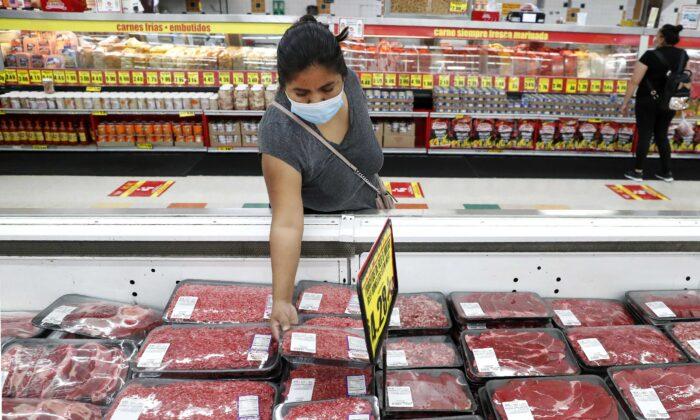WASHINGTON—Energy prices continued to rocket higher in February, although overall wholesale prices moderated after a record jump in January.
The Labor Department’s producer price index, which measures inflation before it reaches consumers, increased by 0.5 percent last month following a record jump of 1.3 percent the month before.
Price increases slowed despite a 6 percent surge in energy last month, which followed a 5.1 percent jump in January, the Labor Department said March 12.
Over the past year, wholesale prices are up 2.8 percent, the largest 12-month gain at the wholesale level in more than two years. Core inflation, which excludes volatile food and energy, rose 2.5 percent over the past 12 months.
Both readings are above the Federal Reserve’s 2 percent target for inflation. Some economists fear that inflation, which has been dormant over the past decade, could begin to rise under the extra demand generated by the government’s new $1.9 trillion stimulus package signed into law last week.
Others disagree, pointing out that there are 9.5 million fewer jobs in the U.S. economy than there were before the pandemic hit a year ago, and argue that unemployment will keep a lid on inflation.
“While underlying price pressures will inevitably heat up amid a healthier, fiscally stimulated economy ... we believe inflation is unlikely to spiral out of control,” said Mahir Rasheed, a senior economist with Oxford Economics. “The Fed should therefore look through the transitory spike and stick to a very dovish policy.”
Fears of higher inflation have driven interest rates on bonds higher in recent weeks but Fed officials, including Chairman Jerome Powell, have insisted that while inflation may jump temporarily this spring as the economy reopens, they see no signs of sustained price increases.
For February, food costs at the wholesale level rose 1.3 percent, the biggest monthly gain since September. A total of 40 percent of the rise in goods prices in February was attributed to a 13.1 percent jump in gasoline prices.
The jump in food costs was driven by higher prices for beef and eggs, while the cost of fresh and dry vegetables fell by 16.7 percent.
Last week, the United States reported that consumer prices rose 0.4 percent in February, the biggest gain in six months, also because of rising energy prices. However, core inflation at the consumer level posted a much smaller 0.1 percent gain.





